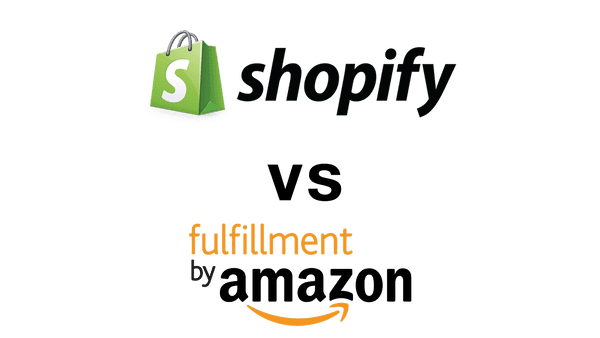Selling More or Selling Out: Trade-offs of Shopify vs. Amazon
When it comes to choosing an e-commerce marketplace, many sellers narrow their choices down to Shopify vs Amazon. Both platforms offer significantly different options and challenges for online sellers to consider. It's entirely possible that some online sellers would most benefit from the exposure of their products on both Shopify and Amazon marketplaces. The only downside to that approach is that using both platforms simultaneously could mean that your business pays double the fees or more.
For those who aren't necessarily looking to play both sides of the e-commerce marketplace game, this article breaks down the pros and cons of Shopify vs Amazon.
Shopify
The major draw for this specialized e-commerce platform is the flexibility and customization options it offers sellers. Thanks to the built-in personalization options and control over sellers' brand identity, this platform gives sellers the tools they need to power their own marketing. While sellers will need to invest in digital marketing to attract customers to the platform, they will likely reap the rewards of a loyal customer base drawn to the unique style and appeal of your online boutique.
Pros of More Storefront Customization
- Maintain complete autonomy over the creative image of your brand
- Stand out from your competitors with storefront display options and layout designs
- Connect meaningfully with a niche audience by exercising more control over your product listings, branding displays, online storefronts, and payment options
Cons of Driving Your Own Marketing
- Increased cost in driving your customers to the platform
- Less visibility compared to more universal marketplaces
- A bigger investment in managing your digital storefront
Amazon
Selling a product on this international e-commerce marketplace means almost instant exposure to costumers who intrinsically know and trust the platform you're using. The built-in marketing exposure and consistent access to repeat customers make this marketplace a winning choice for sellers who prioritize efficiency and high-volume sales. The drawback is that there are far fewer customization options to market your brand as unique. There is also very limited exposure for any visual displays of your branding to connect with customers.
Pros of a High-Traffic, Standardized Marketplace
- Save money on marketing for general exposure due to the popularity of the online marketplace
- A more streamlined process of listing and processing items for sale
- Universal interface increases your accessibility to more customers
Cons of Conforming to a Standardized Marketplace
- More difficult to distinguish your brand with uniformity of listing formats and brand storefronts
- Less autonomy over the types of items you are allowed to list and the way in which they are listed
- More restrictions on customer service policies, such as return and refund procedures, buyer dispute processes, communications platforms, shipping times, payment dispute procedures and order processing times
Conclusion
In sum, choosing between Shopify vs Amazon for your online selling platform comes down to your preferences on the degree of control over your brand's identity, the potential for widespread exposure in a high-traffic marketplace, the investment required to maintain the platform and exercising control over the products you sell. It seems the price that sellers pay for high exposure is relinquishing control over which and how some items are listed. If catering to a more niche audience and maintaining autonomy over the presentation of your brand, then you'd be perfectly justified in swiping right on Shopify and foregoing the ease of use and high-volume exposure that Amazon provides.
